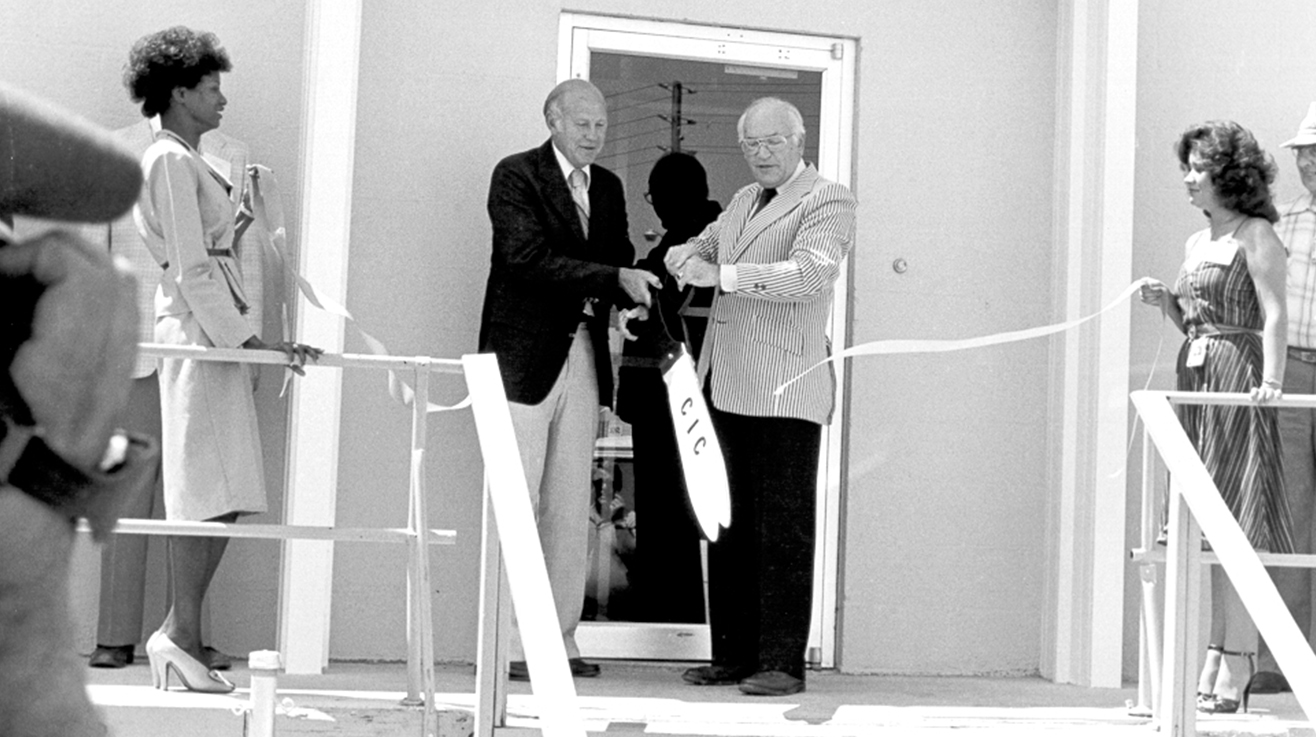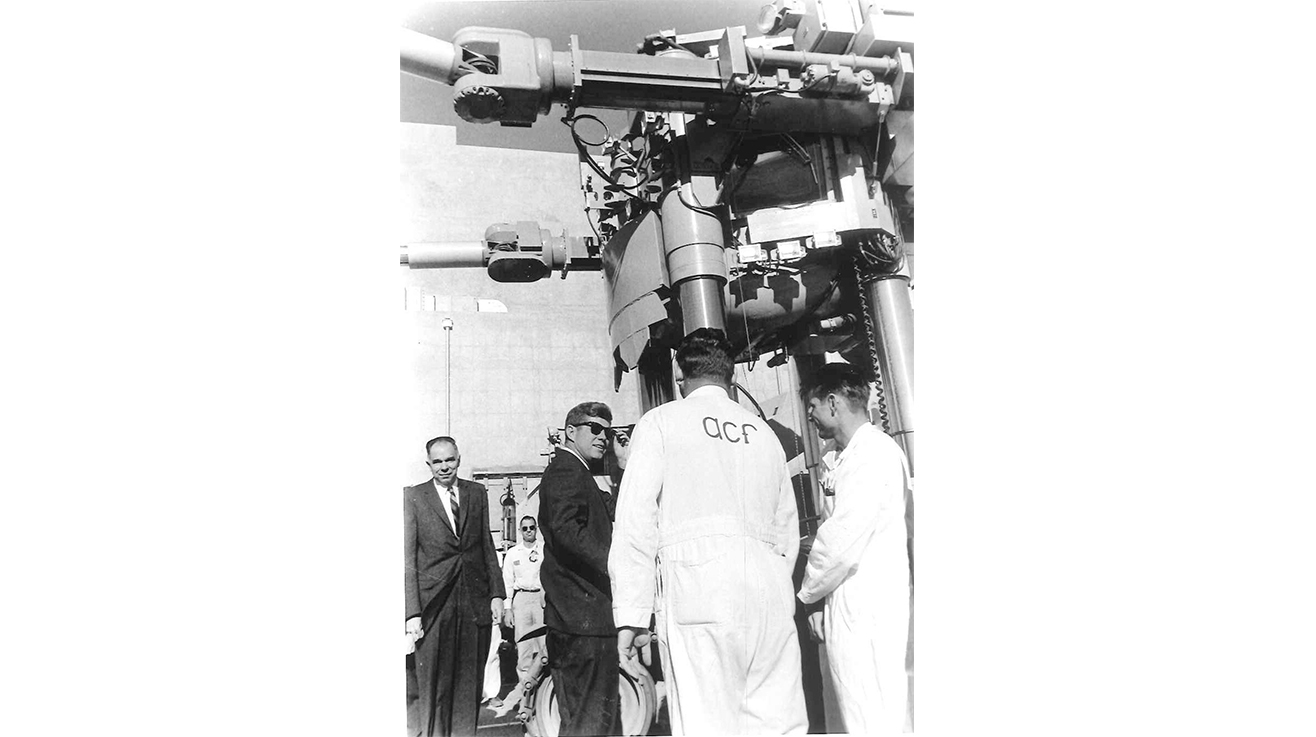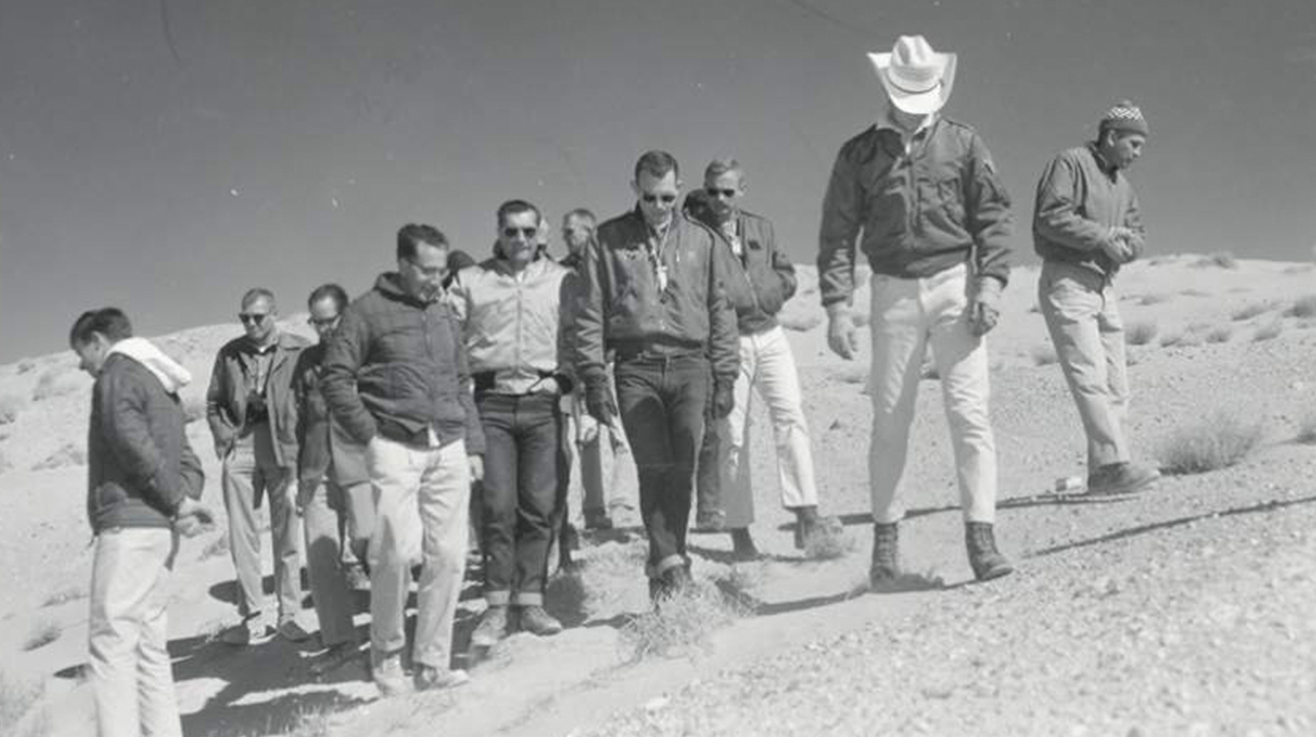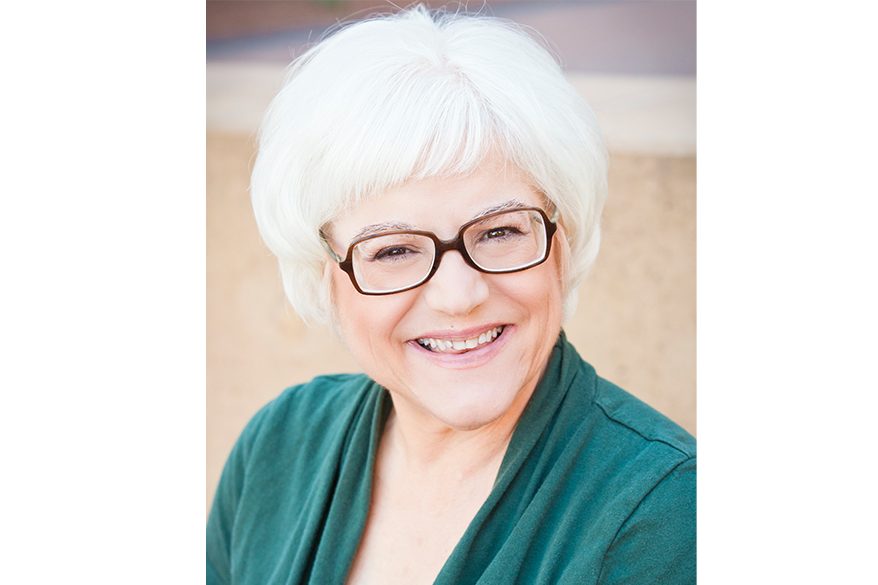“Have you ever seen that episode on ‘Star Trek: The Next Generation,’ where Barclay becomes one with the computer? And you don’t know where one ends and the other begins?”
This is how Nevada National Security Site (NNSS) Archivist Martha DeMarre, who’s retiring Jan. 21 after more than 41 years of service, begins the story of her life with the NNSS.
“This job has been like that,” she said. “This place has been my mission in life.”
While the archives have been Martha’s mission for the past four decades, they aren’t what brought her here.
“I wanted to work with plutonium,” she said. Why? “Because it was difficult. Interesting.”
Martha spent the summer of 1978 using her undergraduate degree in biology—with a concentration in cell physiology—and as a health physics graduate student as a summer hire at the NNSS, then the Nevada Test Site (NTS). Specifically, she worked in the CP-50 building in Area 6, where she worked out a procedure for a source transfer. She researched the current capabilities at the time to monitor large waste containers, containing non-retrievable plutonium in soil.
“There was so much science happening,” she said. “The sky was the limit. ‘We do hard; impossible just takes a little longer,’ was the expression at the time. There was a very can-do attitude out there that was contagious. I called it the Disneyland for science, and I’d gotten the E ticket.”
Martha lived in a two-person trailer in Mercury (the section of the Site closest to the entry) that first year and took advantage of everything life on the Site had to offer.
“I swam, bowled, played softball,” she said. “I was the announcer for several games. They didn’t want me to play because I was terrible. But they wouldn’t even give me a chance!” She laughs.
In the fall of 1978, Martha returned to San Diego State University, where she was taking graduate courses in health physics. In 1979, she was asked if she’d like to come back to the NTS—this time, for something a little different: the establishment of the NNSS archives, first known as the Department of Energy’s (DOE) Coordination and Information Center.
“They told me it was going to be a three-year project,” she said.
Pre-dating the establishment of the National Nuclear Security Administration (NNSA) in 2000, this initial DOE investment and effort was to consolidate information (in all forms) throughout the Nuclear Security Enterprise complex, serving both the public and the government with data and facts from source documents.
“The concept of the original Coordination and Information Center, now the Nuclear Testing Archives, was to collect and house agency records related to fallout from atmospheric nuclear weapons testing in Nevada,” said NNSA Nevada Field Office Public Affairs Program Manager Darwin Morgan. “Martha’s career hallmark, in my mind, is the simple fact this effort has allowed the scientific community to unequivocally demonstrate where fallout occurred, and, from that, extrapolate and paint a realistic and accurate picture on the potential health affects to populations. This never could have been done if not for Martha DeMarre.”
The work was a perfect fit.
“My other love growing up was history,” she said. When selecting a major in college, she chose biology over history because she “didn’t want to type that much”—an amusing justification to look back on these days, as her work is primarily computer-based. But Martha’s always been a good researcher, and her background was perfectly suited for the numerous scientific requests she’s received.
Martha’s work on the NNSS archives has taken her all over the country, seeking records of relevance to the NNSS and nuclear testing in general and getting them declassified.
“We went out to different places to collect records, usually for a week,” she said. To be able to look through the classified files at the various locations, her clearance would be transferred temporarily.
While the work was incredibly interesting, it wasn’t exactly glamorous. Many of the records at the Kennedy Presidential Library had not been touched after President Kennedy’s assassination. By the 1990s, many of the documents’ staples had begun rusting in the humid, salty Bay Area air.
“One of our conditions for working there was to remove all the staples that were rusting and replace them with archival staples,” she said.
“We found the Truman letter at the Eisenhower Presidential Library,” she said, referring to the now-famous document President Harry S. Truman signed on Dec. 18, 1950, authorizing the development of a portion of the Las Vegas Bombing and Gunnery Range as an atomic weapons test site.
While hunting for records of President Eisenhower’s nuclear testing approvals—at the time, each test had to be approved by the president himself—in Abilene, Kansas, she read President Eisenhower’s reflections on his speeches at the Eisenhower Presidential Library.
“He kept a diary—which his secretary would type up—with notes on how each of his speeches went,” she said. “It’s a different view of history.”
What began as a three-year project has developed into an impressive database that’s been an important resource for agencies, organizations and individual researchers alike for the past 40 years.
“It’s a very exciting mission to work for,” Martha said. “It’s amazing—if you pay attention—the kinds of things you can see. The work here is never done.”
These days, the NTA has more than 400,000 documents available to the public through use of the Nuclear Testing Archive Public Reading Facility. The facility maintains more than 40,000 documents relating to Human Radiation Experiments by the Atomic Energy Commission (AEC) as well as more than 360,000 documents dealing with the U.S. nuclear testing program.
“I have loved the job,” Martha said. “I have loved the archives. It’s hard to leave.”
Martha officially retires from the NNSS Jan. 21.
“As a manager who was key to the establishment, development and implementation of the Nuclear Testing Archive, we appreciate her mission dedication for 40-plus years,” said NNSS Quality/Contractor Assurance System Director David Martin, who oversees the NTA. “In highest regard, we humbly follow Martha’s leadership in this mission. Thank you, Martha.”
—–
Martha’s favorite photos from the archives:




